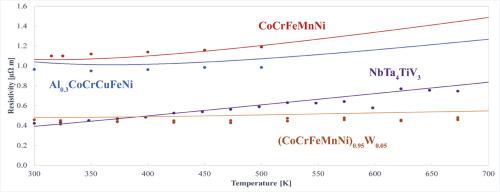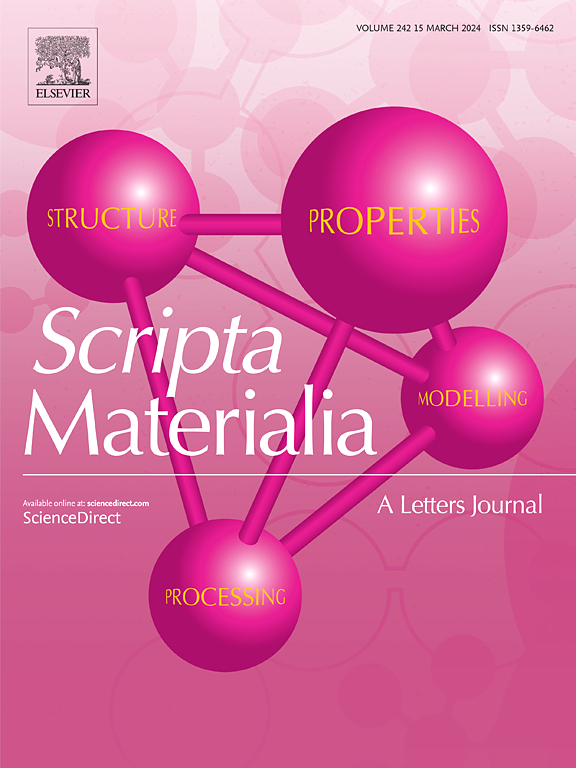多主元素合金电输运的预测分析模型
IF 5.6
2区 材料科学
Q2 MATERIALS SCIENCE, MULTIDISCIPLINARY
引用次数: 0
摘要
提出了多主元素合金(mpea)电导率的预测分析模型,包括含铝、过渡金属和难熔金属的合金。考虑到MPEA的Wigner-Seitz电池的晶格参数与大块金属玻璃类似,假设电子散射可以用一系列两能级系统来近似。由此产生的降阶模型能够准确地确定电阻率和电子导热系数,这是基于两能级系统中电子在基于布洛赫电位的虚拟晶体近似中的散射。将模型结果与Al0.3CoCrCuFeNi, CoCrFeMnNi, (CoCrFeMnNi)0.98W0.02, (CoCrFeMnNi)0.95W0.05和Nb4Ta4V3Ti在300 K和700 K之间的四点探头电阻率实验结果进行了比较,以验证模型的有效性。本文章由计算机程序翻译,如有差异,请以英文原文为准。

A predictive analytical model of electrical transport in multi-principal-element alloys
A predictive analytical model is presented for the electrical conductivity of multi-principal-element alloys (MPEAs), including those containing aluminum, transition metals, and refractory metals. Given that the lattice parameter of the Wigner-Seitz cell of an MPEA is similarly variable to a bulk metallic glass, it is postulated that electron scattering can be approximated by a series of two-level systems. The resulting reduced-order model enabled an accurate determination of electrical resistivity and electron thermal conductivity based on the scattering of electrons in a two-level system across a Bloch-potential-based virtual crystal approximation. Model results are compared to experimental four-point probe electrical resistivity measurements between 300 K and 700 K for Al0.3CoCrCuFeNi, CoCrFeMnNi, (CoCrFeMnNi)0.98W0.02, (CoCrFeMnNi)0.95W0.05, and Nb4Ta4V3Ti, for model validation.
求助全文
通过发布文献求助,成功后即可免费获取论文全文。
去求助
来源期刊

Scripta Materialia
工程技术-材料科学:综合
CiteScore
11.40
自引率
5.00%
发文量
581
审稿时长
34 days
期刊介绍:
Scripta Materialia is a LETTERS journal of Acta Materialia, providing a forum for the rapid publication of short communications on the relationship between the structure and the properties of inorganic materials. The emphasis is on originality rather than incremental research. Short reports on the development of materials with novel or substantially improved properties are also welcomed. Emphasis is on either the functional or mechanical behavior of metals, ceramics and semiconductors at all length scales.
 求助内容:
求助内容: 应助结果提醒方式:
应助结果提醒方式:


